|
The Cau Dong Pagoda on Hang Duong Street in Dong Xuan Ward, Hoan
Kiem District of Hanoi is the only place in the city paying homage to
Grand Chancellor Tran Thu Do, founder of the Tran Dynasty (1225 to
1400).nbsp;
In the old days,
Cau Dong Pagoda, also known as Dong Mon (Eastern gate) Pagoda, belonged to
Hau Tuc Canton, Tho Xuong District. Legend has it that the Pagoda was
built during the Ly Dynasty (1010-1225) and was restored several times.
During that time in this area there was a stone bridge, named Dong Bridge,
crossing over the To Lich River and “Cua Dong” (the eastern gate of Thang
Long Citadel), so the locals named the pagoda “Cau Dong” (Eastern Bridge)
to distinguish it from other pagodas. The Pagoda still retains many
ancient steles including one erected in the 6th Vinh To Year (1624) with inscriptions about
the purchase of land and the expansion of the precinct and the
pagoda.
|
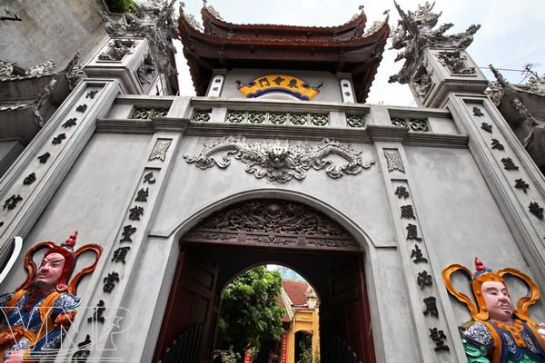
The three-gate door of
Cau Dong Pagoda.
|
|

The main chamber of
Cau Dong Pagoda.nbsp;
|
|
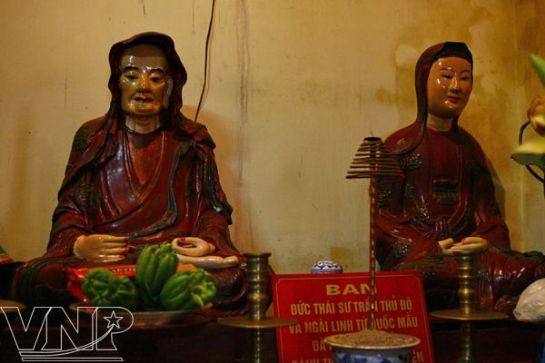
The statues of Grand
Chancellor Tran Thu Do and his wife Tran Thi Dung.
|
|
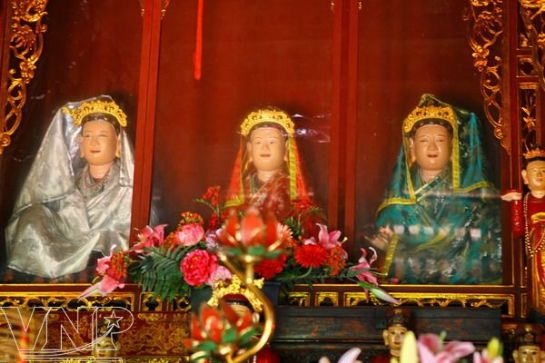
The statues of Present, Past and
Future.
|
|
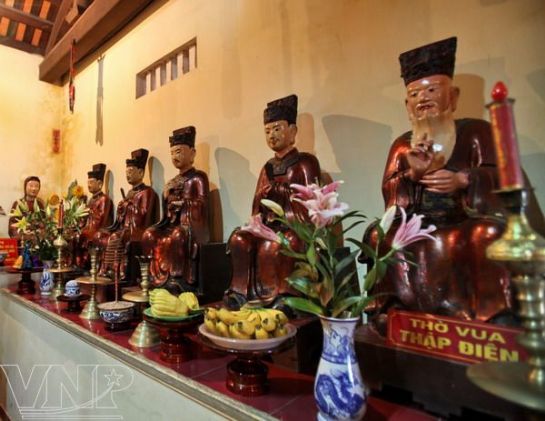
Statues of the kings of hell.
|
|
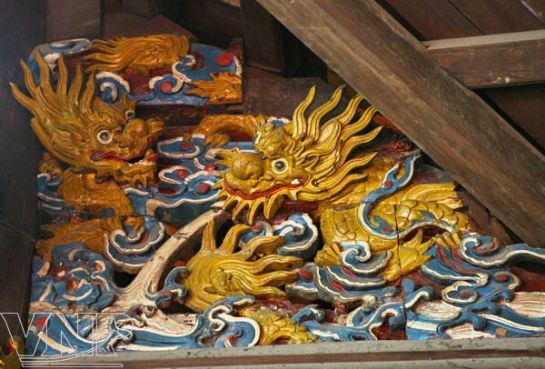
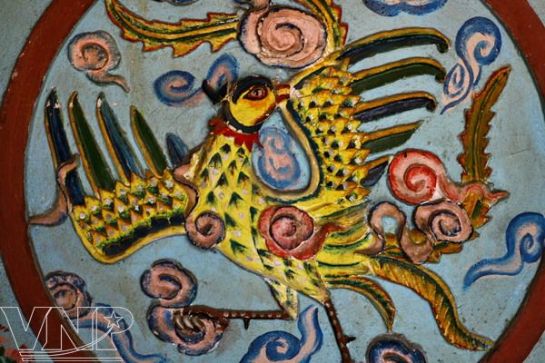
Some typical designs of Cau Dong Pagoda’s
architecture.
| nbsp;
Compared with
other ancient pagodas in Hanoi, Cau Dong Pagoda is known for preserving
nearly 60 valuable ancient statues of Buddha. The most important antiques
of the Pagoda are the statues of present, past and future, all of which
were carved in the first half of the 18th century. These are
rare, precious and beautiful statues with high artistic value, which are
shown with ornamental items, such as the necklaces and female facial
features with all standards of statues in the 17th –
18th centuries in Vietnam. In the great
shrine dedicated to the kings of hell there is a Tuyet Son statue with
beautiful carvings which is also a rare and precious statue.
Inside Cau Dong
Pagoda there is an altar and statues of Grand Chancellor Tran Thu Do and
his wife, Tran Thi Dung. Tran Thu Do was a prominent politician who was
credited with founding and strengthening the Tran Royal Dynasty. In 1258
when the Yuan Meng invaded the country of Dai Viet for the first
time, although being over 60 years old, he bravely said to King Tran Thai
Tong: “My head has not yet fallen. Don’t be worried, Your Majesty!” Only
10 days later, the army and people of the Tran Dynasty made a
counter-attack and defeated the Meng invaders. During the first
resistance war against the Yuan Meng invaders, Tran Thi Dung was also
credited with leading the royal family to leave the imperial city of Thang
Long, later organized the people to collect metal and iron and encouraged
the workers to cast weapons to supply the Tran troops. She also managed
the supplying of food and foodstuff to the soldiers. For her work and
devotion she was awarded the title “Linh Tu Quoc Mau” (Kind-hearted mother
of the country) by the Tran King.
Moved and
inspired by the merits and activities of Grand Chancellor Tran Thu Do and
his wife, Tran Thi Dung, the local people around Cua Dong Pagoda erected
their statues and worship them, creating a unique feature of this ancient
pagoda in the heart of Thang Long – Hanoi.
Story: Le Huu
Tuan
Photos: An Thanh
Dat |